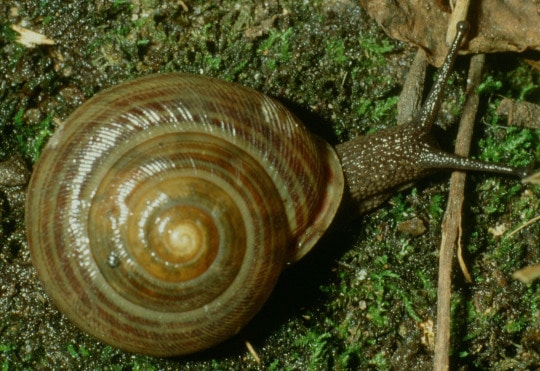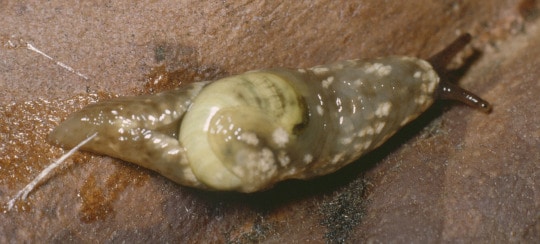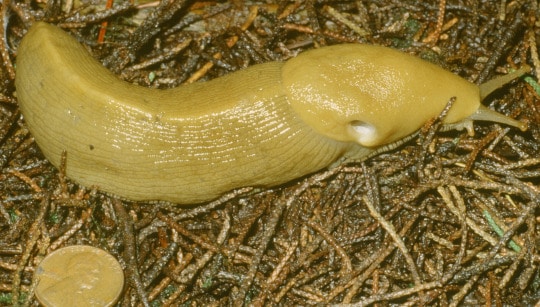When lifestyles or forms evolve multiple times, we often think they must have some benefit. For example, flying creatures evolved at least 4 separate times: birds, bats, insects, and pterosaurs. These 4 separate origins of flight support the idea that there must be an advantage to flying. (You can probably think of some advantages.)
Slugs evolved from snails more than a dozen separate times. By that logic, there must be an advantage to being a slug, but compared to flight, it’s harder to think what the advantage might be. Slugs evolved from snails by reducing the size of the shell and internalizing it (yes, most slugs have an internal shell), and there are likely to be consequences of reducing the shell.

Furthermore, in the lineages leading from snails to slugs, an intermediate stage occurs called a semi-slug (not a slug the size of a semi-truck). In contrast to snails that have an external shell large enough to accommodate the body, or slugs in which the shell is completely internal or absent, semi-slugs have an external shell, but the shell is too small to accommodate the animal’s entire body. Many semi-slugs live on our planet today (for example, Vitrinizonites latissimus lives in the Great Smokey Mountains). Curiously, semi-slugs evolved from snails at least 22 times.

Let’s consider some possible advantages and disadvantages of these body forms: protection from predators, protection from desiccation (drying out), need for calcium, and fitting into tiny hidey holes. As shown in the table, shells protect snails from predators and from drying out, but the snails still need lots of calcium to build shells, and the rigid shell prevents them from squeezing into tiny hidey holes. Snail score: 2 advantages, 2 disadvantages. Slugs, on the other hand, are not protected from predators or drying out, but have less need for calcium and can fit into tiny hidey holes. Slug score: 2 advantages, 2 disadvantages. However, semi-slugs seem to have all disadvantages: no protection from predators or drying out, a need for calcium, and can’t fit into tiny hidey holes. Semi-slug score: 0 advantages, 4 disadvantages.
| Predator protection | Desiccation protection | Need less calcium | Fit in tiny hidey holes | |
| Snail | + | + | – | – |
| Semi-slug | – | – | – | – |
| Slug | – | – | + | + |
In evolution, every form in a lineage must have at least a limited track record of survival, so how did slugs evolve from snails if they had to go through a life form having so many disadvantages, and how could that evolution have happened so many different times?

Although we don’t know the answer for sure, my studies suggest some possible answers. I examined locations where slugs and semi-slugs evolved from snails. I discovered that many of those events seem to have happened on oceanic islands (40%) and within 35° of the Equator (80%). Islands often have fewer predators and tropical and subtropical islands often have regular moisture inputs (daily rain or fog), so on islands there might be less need of shells or hidey holes for protection from predators or desiccation. I’m not sure what to predict about calcium because many islands are volcanic, with calcium-poor soils, but calcium carbonate would be available from empty seashells washed up on the shore. If calcium were difficult to find, that might favor forms needing less calcium. Evolutionary biologists use the term “relaxed selection” to refer to a situation in which changes to an organism’s environment cause less need to maintain certain forms or behaviors.
It seems likely to me that relaxed selection on tropical islands allowed the evolutionary transition from snails to semi-slugs to slugs by reducing the disadvantages of having, or not having, a shell.
Where better to be sluggish than on a tropical island?
Timothy A. Pearce, PhD, is the head of the mollusks section at Carnegie Museum of Natural History. Museum employees are encouraged to blog about their unique experiences and knowledge gained from working at the museum.
